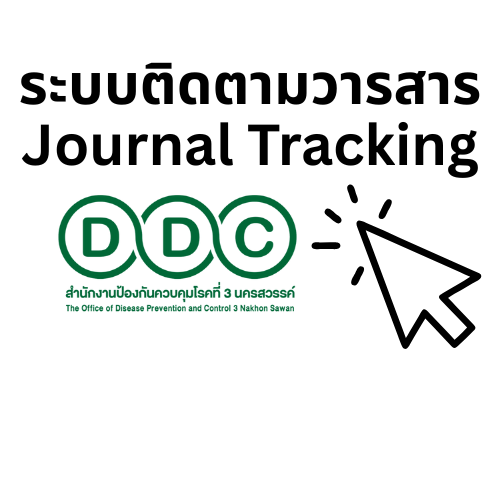The Factors Related to Satisfaction and Dissatisfied of Laundry Service at Mae Sot Hospital in Tak Province
Keywords:
Satisfaction and Dissatisfied, Laundry ServiceAbstract
This study aimed to study and to analyze factors that affecting of satisfaction in laundry service at Mae Sot Hospital in Tak Province. During June to August 2560, we conducted cross-sectional survey of 289 staffs with questionnaires by simple random sampling. Factors that associated with knowledge and behavior were analyzed by employing multiple regression analysis. The data were analyzed using descriptive statistics (percent, mean and standard deviation) and inferential statistics (correlation and multiple regression analysis). The outcomes indicated that most of samples were females with age between 21 and 40 years, the educational level: secondary level nearly the same as university level and most of staffs working in other units. The Pearson Product Moment correlation coefficient between the quality of service and total scores of satisfaction in laundry service, process of service and spending time in service were 0.645, 0.621 and 0.605, respectively. The regression model could be reported as 56.4 % of the variance in satisfaction in laundry service can be predicted by 5 variables : the proper size of the patients’ garment, service in time, the process of job that had be announced, suitable uniform of staffs, and the appropriate of need at significantly statistical difference level 0.01. Policymaker need improve the laundry service with 5 factors from the results of this study.
References
2. Yamane, Taro. (1967). Statistics: An Introductory Analysis. New York: Harper and Row.
3. ศิริชัย กาญจนวาสี, (2554). ทฤษฎีการประเมิน. พิมพ์ครั้งที่ 7. ปีที่พิมพ์ 8/2554. โรงพิมพ์แห่งจุฬาลงกรณ์มหาวิทยาลัย. กรุงเทพฯ.
4. กัลยา วานิชย์บัญชา. (2548). การใช้ SPSS for windows ในการวิเคราะห์ข้อมูล.กรุงเทพฯ : ภาควิชาสถิติคณะพาณิชยศาสตร์และการบัญชี จุฬาลงกรณ์มหาวิทยาลัย.
5. พนิดา ศรีสำรวจ. ความพึงพอใจของผู้ใช้บริการต่องานจ่ายกลาง / ซักฟอก โรงพยาบาลขุนขันธ์ อ.ขุนขันธ์ จ. ศรีษะเกษ (Internet) เข้าถึงเมื่อ 27 สิงหาคม 2560. เข้าถึงได้จาก http://gishealth.moph.go.th
6. Kano, N., Seraku, N., Takahashi, F., Tsuji, S. 1984. Attractive quality and must be The Journal of the Japanese Society for Quality Control, April, 39-48.
7. Millet, John D. (1958). Management in Public Service. New York : McGraw-Hill,
8. Liker J. K. (2004). The Toyota Way. McGraw-Hill. New York, U.S.A.
9.วรรณวิมล จงจรวยกุล. (2551). ความพึงพอใจในการบริการของงานทะเบียนและวัดผล. วิทยาลัยราชพฤกษ์; กรุงเทพฯ.
10. ธัญญารัตน์ บุญต่อ. (2552). ปัจจัยที่มีอิทธิพลต่อความพึงพอใจของผู้ใช้บริการโรงแรมเวสติน แกรนด์ สุขุมวิท. สารนิพนธ์บริหารธุรกิจมหาบัณฑิต บัณฑิตวิทยาลัย. มหาวิทยาลัยศรีนครินทรวิโรฒ.
11. Teshmatolah Heydari, et al, Customers’ satisfaction about prehospital emergency medical services in lorstan, Iran. Electronic Physician, March 2017, Volume 9, Issue 3 Page 3974 – 3979, DOI: htpp://dx.doi.org/10.19082/3974
12. Sendro Castado,et, al, The missing path to gain customers loyalty in pharmacy retail: The role of the store in developing satisfaction and trust. Research in Social and Administrative Pharmacy. Volume 12, Issue 5, September – October 2016; 699-712.
Downloads
Published
How to Cite
Issue
Section
License
Copyright notice
Article published in the Journal of Disease and Health Risk DPC.3 Nakhon Sawan. It is considered a work of academic research and analysis as well as the personal opinion of the author. It is not the opinion of the Office of Disease Prevention and Control 3, Nakhon Sawan. Or the editorial team in any way Authors are responsible for their articles.
Privacy Policy
Name, address and e-mail address specified in the Journal of Disease and Health Risk DPC.3 Nakhon Sawan. It is used for identification purposes of the journal. And will not be used for any other purpose. Or to another person.








